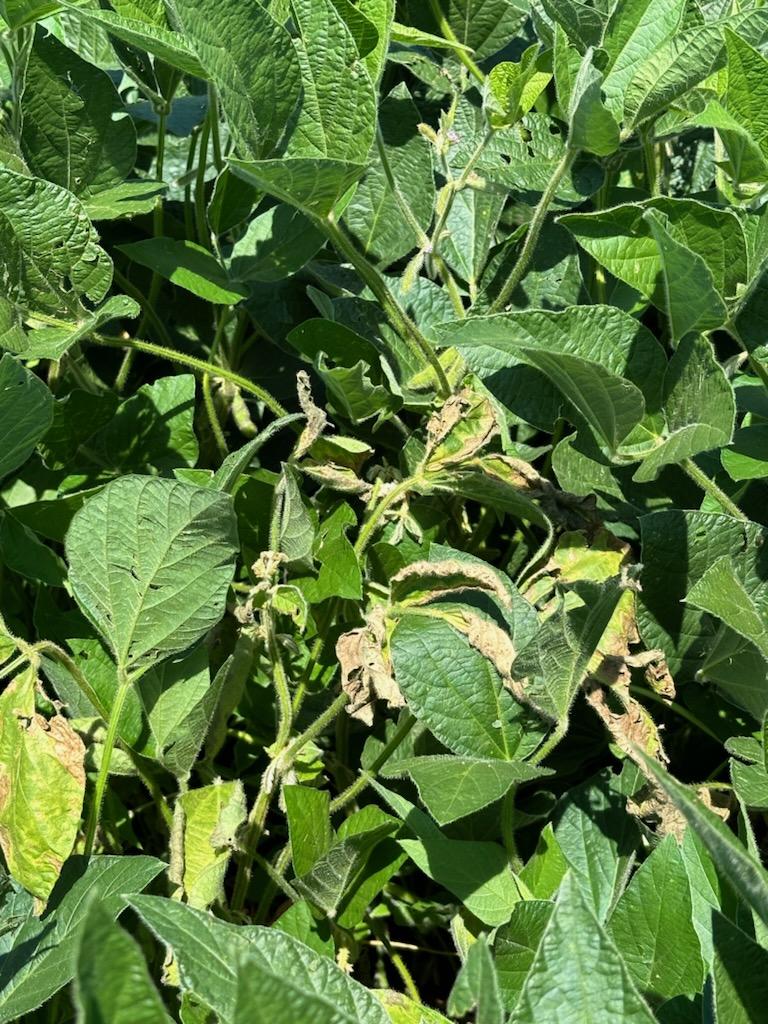Sclerotinia stem rot (white mold) was scouted in soybeans at the R2 (full flower) growth stage. White mold is caused by the pathogen Sclerotinia sclerotiorum. It can overwinter in the soil as a hard dark mass called sclerotia. Plants are infected during flowering and symptoms may include wilted and discolored leaves, white mycelium growth on stems and pods, and stems or pods that appear water soaked.
The fungus likely survives in infested crop residue and can be seed transmitted. Cool, moist conditions favor disease development.
Developing a management plan based on knowledge of field history and best disease management practices can help reduce losses as a result of white mold. Integrating several management practices that include cultural control, varietal resistance, and chemical and biological control can be part of an effective white mold management plan.





